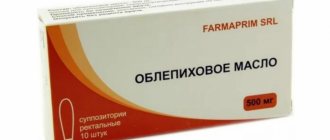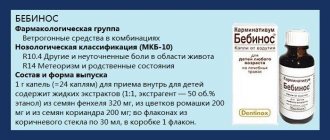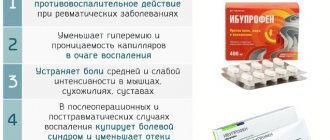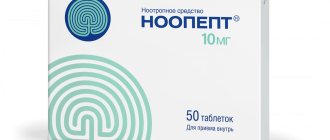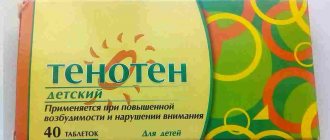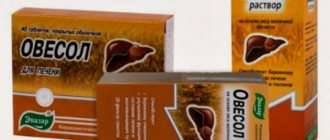In cases where it is necessary to apply a bandage to damaged skin to heal the wound, it is necessary to use improvised means. Fiddling with bandages and tubes of ointments is inconvenient. In addition, you have to repeat the procedure several times a day.
Modern medicine offers an alternative approach to solving this issue. There are many drugs created to quickly restore the epidermis. Among them is Branolind N. To achieve maximum effect from the therapeutic course, it is recommended that you first carefully study the instructions for use.
Release form
Pharmacy chains offer an effective wound-healing bandage Branolind N and a patch Branolind. Their difference is in composition. The first option is presented in the form of a gauze bandage soaked in an ointment composition and Peruvian balsam. This type has the advantage of ease of use.
There is no need to prepare the product. The fabric is already pre-impregnated with a special substance in the required dosage. A product with this mark has a higher concentration of active substance compared to a regular patch.
Comes in 2 sizes:
- 7.5 by 10 cm;
- 10 by 10 cm.
The product has other forms of release. It can be found impregnated with oils. They are ineffective for treating wounds. They are used in cosmetology and massage.
What is a trophic ulcer
A trophic ulcer is a long-term non-healing tissue defect that occurs as a result of vascular damage to the superficial and deeper veins. These damages lead to disruption of lymph and blood flow and, as a consequence, insufficient tissue nutrition.
The formation of ulcers is preceded by the following symptoms: swelling, severe itching, change in skin color and thinning. The skin acquires a smooth, glossy surface, and stagnant lymph begins to appear on the surface in the form of drops. The condition is aggravated by chills and convulsions. The epidermis begins to peel off, and ulceration occurs in this place, causing severe pain at the slightest touch. The ulcerative surface quickly becomes infected, begins to fester, and inflammation penetrates deeper into the tissue.
Ulcers are difficult to treat, the likelihood of relapses is high, and after healing deep scars form in their place. Most often, ulcers occur in the lower third of the leg.
Compound
The product looks like a bandage made from mesh gauze. The active substance of the drug is Peruvian balsam in a dosage of 265 mg. Cellular fabric is impregnated with it.
Also among the components are:
- white Vaseline;
- intermediate triglycerides;
- Branolind ointment;
- hydrogenated fat;
- 50% glycerol monostearate;
- cetomacrogol 1000.
The balm is enriched with various essential oils in large quantities, as well as benzoic and cinnamic acid.
It has a red-brown color. The liquid has a viscous consistency. It gives the Branolind N dressing an anti-inflammatory and bactericidal effect. Glycerin in the composition protects damaged skin from liquid penetration. Branolind ointment is responsible for the antibacterial effect. It creates a barrier to harmful microorganisms.
Pharmacological properties
Branolind N, the instructions for use of which indicate the natural origin of the product, has an anti-edematous and anti-inflammatory effect. The product is capable of maintaining bactericidal properties for a long time. It causes tissue cells to actively regenerate, accelerates the outflow of secretions in the inflamed area and prevents blood poisoning.
In cosmetology and dermatology, it is used in cases of poor healing of burns, wounds and other skin injuries, as well as for the treatment of various types of dermatitis. The action of Branolind N is aimed at restoring the elasticity of the edges of the wound and protecting them from roughening and drying out. It works at any stage of the healing process.
In the case of treatment of burns, the drug manifests itself especially. It has a cooling effect on the inflamed area of the skin, which helps to significantly reduce the sensation of burning and itching. In addition, Branolind N is able to numb the sore spot for up to 3 days.
A bandage with ointment impregnation prevents the appearance of scar complications, and also supports the process of epithelization and tissue granulation. This feature allows you to keep the joint in a mobile state after healing of skin lesions. The use of a bandage does not lead to injury or pain, because it almost does not stick to the surface.
The cotton base with a special cellular structure allows air to circulate freely and to damage. This allows the injured skin to ventilate and breathe. This feature promotes faster healing. The use of Branolind N minimizes the likelihood of formation of wet cavities.
Alginate dressings
These dressings are made from seaweed and are similar in structure to glass wool. The dressings contain calcium or sodium alginate, which turns into a gel upon contact with liquid.
Alginates are natural polysaccharides. The main source of alginates in nature is seaweed of the genus Laminaria, where they are contained in the form of alginic acid salts, mainly sodium alginate.
These dressings are suitable for use in deep wounds and pockets. They perfectly absorb large amounts of liquid and bacteria. In the form of a gel, they do an excellent job of soaking necrosis, fibrin and crusts of dead tissue. That is why such dressings are used to treat bedsores and chronic wounds of 3-4 degrees.
Diaper rash and bedsores: how to treat at different stages In what places do bedsores form, and in which diaper rash, how to treat them depending on the stage Olga OsetrovaTatyana Parfenova
Symptomatic treatment
Nowadays such bandages are made with reinforcement. This is necessary so that the alginate particles do not disintegrate and remain in the wound. If using a non-reinforced dressing, the wound can be irrigated to remove alginate particles. Alginate is not absorbed and is quickly washed off with saline solution.
The alginate dressing must be secured on top with another dressing. It can be a film bandage, hydrogel or sponge. The alginate dressing can also be covered with napkins and secured with a self-adhesive bandage.
If you are using an alginate dressing on a very wet wound, it can be used dry. If the wound is dry and covered with necrosis, then the alginate is pre-moistened with saline solution. This is necessary to restore a moist environment to the wound.
- Algisite M
Algisite M. Photo: www.aramed.ru
- Alginate dressing Suprasorb A
Alginate dressing Suprasorb A. Photo: www.bonanzamarket.co.uk
- Medisorb A
Medisorb A. Photo: www.eapteka.ru
- Algitek S silver bandage
Algitek S silver bandage. Photo: mtkimpex.ru
Pharmacodynamics
A sterile dressing is made of gauze with large indentations that allow oxygen to pass through and protect the wound from dirt. It can be soaked in Peruvian balsam or a neutral ointment composition without drugs. The hydrophobic base prevents Branolind from sticking to the wound and protects against damage to granulations during dressing.
Replacing the patch takes place without any discomfort. Peruvian balsam has an oily consistency. Its color is dark. It accelerates the growth of granulations and has an anti-inflammatory and antiseptic effect. These properties contribute to the rapid restoration of the epithelium and wound healing.
The risk of scar formation after burns, frostbite and trophic ulcers is reduced. It is recommended to use the dressing at all stages of wound healing. It has a protective function of the surface from the environment. No scabs will form underneath.
Thanks to the elasticity of Branolinda N fabric, the product can be used on any wound, even in hard-to-reach places. The bandage is suitable for any skin type, including sensitive. It does not cause irritation or allergic reactions.
How to Apply Balsam of Peru Dressing
The Branolind dressing should be applied in accordance with the instructions in stages:
- Pre-treat the damaged and nearby skin with an antiseptic solution without the presence of alcohol.
- With clean hands, open the individual packaging.
- Without removing the protective paper, cut the bandage according to the size of the wound.
- After removing the protective layer on one side, apply the napkin to the wound.
- Remove the protective layer from the other side.
After application, the bandage must be covered with a bandage or gauze and secured with a bandage or plaster.
You need to change the napkin every day, and if there is significant discharge of pus, up to three times a day. When treating burn injuries, the bandage should be changed every two days.
The manufacturer does not exclude the use of the drug in combination with other medications, including those with similar effects.
Indications for use
Branolind N, instructions for use of which are included in the kit, in the form of a bandage is most often used in cosmetology and surgery. The bandage is used to prevent purulent complications of wounds and other damage to the skin.
The product is also effective for therapy:
- bruises;
- cuts;
- lacerations;
- furunculosis;
- abrasions;
- frostbite;
- bruises;
- thermal and chemical burns;
- pathologies of bactericidal or fungal nature;
- purulent abscesses;
- frostbite;
- bedsores in the initial stage;
- trophic and diabetic ulcers.
The drug is also used in skin transplantation to secure epithelial flaps or grafts. The bandage is applied after phimosis operations and removal of the nail plate. The product helps with non-healing erosions and ulcers formed when the integrity of blisters caused by burns is broken.
The best anesthetic ointment dressings
Parapran (with lidocaine)
Parapran (with lidocaine) is made of cotton fabric. The cellular base with large fibers perfectly absorbs exudate and does not interfere with air exchange processes, which helps maintain optimal humidity.
The composition contains lidocaine, which provides local anesthesia. By using a paraffin composition, it was possible to achieve a prolonged therapeutic effect (under the influence of body temperature, the substance gradually releases lidocaine) and eliminate the possibility of the bandage sticking to the damaged area.
Additional medicinal solutions are responsible for accelerating the regeneration process of the skin. This remedy is suitable for the treatment of abscesses, bedsores, burns, frostbite, trophic ulcers, purulent lesions and bites. The product is produced in two copies: 7.5x10 and 10x10 cm. On average, the price for 30 pieces is 1800 rubles.
Parapran (with lidocaine)
Advantages:
- Does not cause allergic reactions;
- You don’t have to change it for 6 days;
- Does not injure the formed young epithelium and underlying tissues;
- Ease of use;
- Gradual and long-term impact.
Flaws:
- It is necessary to use additional absorbent and fixing materials.
GelePran dressing with Lidocaine
The drug is designed for local anesthesia and protection of damaged skin without secreting fluid. The GelePran dressing with Lidocaine is relevant for soothing the dermis after cosmetic procedures, as well as for burns, trophic ulcers of various origins, bedsores, long-term non-healing, superficial and surgical wounds and pustular diseases.
A shape-stable hydrogel plate, which consists of 70% water, is responsible for the normal exchange of air masses, creating and maintaining an optimal moisture balance in damaged areas. The average cost of one package (2 pcs.) is about 468 rubles (product size 5x7.5 cm). To maintain sterility, each product is sold in completely sealed packaging.
The peculiarity of the product is long-term pain relief due to the slow release of the anesthetic from the structure of the drug.
GelePran dressing with Lidocaine
Advantages:
- Larger size 7.5x10 cm available;
- Possibility of cutting the coating (with sterile scissors);
- Detailed instructions;
- You can order a pack of 6 pieces;
- High efficiency.
Flaws:
- Expensive.
Instructions for use
Instructions for use are included with the patch. She explains in detail how to properly use Branolind N for various types of skin damage. The active substances in the impregnation begin to act when they reach the surface of the wound.
Step-by-step use of the bandage:
- Open the sterile package.
- Cut off the bandage, the size and shape of which should correspond to the damaged area of skin.
- Remove the protective film from the adhesive layer.
- The product is applied strictly to wounded skin.
- For additional fixation, you can wrap a bandage on top.
Properties of Branolind N dressing:
- Does not allow the wound surface to dry out, softens the edges of the wound.
- Promotes the formation of granulations, stimulates the growth of new epithelium.
- Prevents the formation of scar tissue.
- Has antiseptic and antibacterial effects.
- Does not stick to the surface of the wound.
- Porous fabric ensures free circulation of oxygen.
- It passes wound secretions well, preventing it from stagnating and forming moist cavities.
- Changing the bandage is convenient, simple and painless.
Side effects
Since the impregnated gauze bandage is applied directly to the lesions, the constituent substances of the product instantly penetrate into the blood. This can lead to allergic reactions in the body. In some cases they can lead to anaphylactic shock.
The figure lists when Branolind N is used.
In general, Branolind N is tolerated normally, only sometimes unpleasant symptoms occur.
Possible side effects:
- Hyperemia of the entire skin surface.
- A slight burning sensation of the wound and the epidermis around it.
- Manifestations of urticaria.
- Itching.
- Digestive system disorder.
- Irritation.
If the patient's condition worsens and at least one negative symptom occurs, you must immediately stop using the drug and consult a doctor.
What should you pay attention to when choosing?
The choice of product depends on the type of injury, the degree of damage, the contents of the microflora, the presence and amount of discharge, and the possibility of negative reactions of the patient to each individual component.
Self-prescription and self-medication can lead to significant deterioration in health with long-term unwanted complications. Therefore, in order to avoid mistakes when choosing, it is important to consult a doctor who, after studying the medical history, will prescribe an effective and safe drug in each individual case.
Where can I buy
You can purchase the drug at any pharmacy chain in the city or via the Internet. Branolind N is available without a prescription in a package containing 30 dressings. This amount is enough until the wound is completely healed, about 1 month.
The cost of the product depends on the size of the bandages. Thus, the price of small segments, the parameters of which are 7.5 by 10 cm, starts from 1000 rubles. Larger headbands, 10*20 cm, cost approximately 2,600 rubles. for 30 pcs.
Criterias of choice
The purpose of the rating is to provide you with a list of the best, most effective and safe ointment dressings. To do this, we carefully studied customer reviews and expert reviews.
During the selection, special attention was paid to the following characteristics:
- Type – regenerating, antimicrobial, absorbent, healing, antiseptic, hemostatic, anesthetic or universal;
- Scope of use;
- Treatment effectiveness;
- Sterility and hypoallergenic;
- Base material;
- Duration of use;
- Ease of application and removal;
- Degree of breathability;
- Size and tactile sensations;
- Availability of instructions;
- Period of use;
- Availability of product change indicator;
- No sticking to skin;
- The need for additional means of fixation;
- Duration of storage when unopened;
- Value for money.
It was also important to make sure how well the product is modeled on any area of the skin, and whether it is suitable for the treatment of chronic wounds. According to buyers and the team of the VyborOk website, 8 products from some of the best manufacturers, presented below, are distinguished by the best efficiency.
Analogs
Pharmacies offer a large selection of antibacterial, anti-inflammatory, contraceptive and wound-healing drugs. They, like Branolind N, are used to heal serious damage to the skin.
You cannot replace them with each other without consulting a doctor. After all, the drugs have different compositions, which means that contraindications may also differ. Analogs of a gauze dressing with Peruvian balsam Branolind N, the size of which is 10x10, are presented in the table.
| Name | Compound | Application | Price, rub./30 pcs. | |
| Voskopran | Propolis, beeswax, vitamin E. Available with ointments: levomekol, dioxidin, methyluracil. | For burns, ulcers, frostbite and clean wounds and injuries in the granulation stage. | 1650 | |
| Grazolind | White Vaseline, fatty acids, wax. | Postoperative wounds, trophic ulcers, bedsores, burns of thermal and chemical nature. | 1500 | |
| Hydrotulle | Cellulose pulp, petrolatum, polyacyl-2 bisdiglyceryl adipate, triglycerides, glyceryl stearate, diglyceryl isostearyl succinate, coconut oil. | Bedsores of 1st and 2nd degree, trophic ulcers and burns of various types. | 2100 | |
| Proteox-TM | Dialdehyde cellulose, mexidol, crystalline trypsin. | Abscesses, purulent wounds, bedsores of all stages, diabetic, venous and trophic ulcers, phlegmon. | 4800 | |
| Cosmopore E Steril | polyester, viscose, hypoallergenic glue, polyethylene mesh. | Postoperative sutures, minor skin damage. | 750 | |
The Branolind N patch has many good reviews from patients and specialists. It shows high efficiency in healing burns and wounds of various types and complexity, if you strictly follow the instructions for use. The drug also showed positive results in the treatment of old skin lesions.
Author: Pronina Marina
Introduction
Treatment of wounds of any etiology remains an urgent task in surgery. In the process of their healing, the doctor faces many problems. First of all, there is the problem of infection. A burn wound is much more susceptible to infection than wounds from other types of trauma [1, 7, 8]. The widespread use of antibiotics and antiseptics in the 50-70s made it possible to reduce the level of local and general complications of burn injury, but at the same time initiated the emergence of antibiotic-resistant microflora. Presence of methicillin-resistant Staphylococcus aureus (MRSA), vancomycin-resistant enterococcus (VRE), or multidrug-resistant Acinetobacter baumani
is a significant obstacle to successful wound therapy [9, 11, 13, 14]. The use of modern wound dressings can significantly narrow the indications for the use of antibiotics.
These products contain metallic silver or silver ions as an antimicrobial component. It is known that silver ions have high antimicrobial activity against gram-positive and gram-negative flora, including antibiotic-resistant species such as MRSA, VRE, antifungal activity against fungi of the genus Candida
[9, 11].
The main silver-containing drug most widely used in combustiology is silver sulfadiazine, which is included in various creams at a concentration of 1% (Dermazin, Silvederm, Flamazin, Silvadene, Silverdine) [7, 8]. The disadvantages of this drug are the need for frequent dressings, increased body temperature, especially in children in the first 3 years of life, allergic reactions, and contact dermatitis. When applying the cream, patients often experience a burning sensation; changing the dressing is painful, sometimes accompanied by bleeding due to trauma to the wound surface when the secondary (gauze) dressing sticks [3, 4]. This significantly reduces the quality of life of patients with thermal injury and requires additional prescription of analgesics.
As a result, when creating new wound coverings, they strive, first of all, to reduce pain through the use of high-tech materials [2, 5, 6].
Mepilex Ag dressing is a new multicomponent multilayer coating that comes into contact with the wound through a soft silicone layer using Safetaс technology.
Material and methods
In the period from March to May 2010, the Mepilex Ag dressing was tested in the thermal injury department to evaluate its effectiveness in children with burn wounds.
Mepilex Ag is an antibacterial sponge dressing with a soft silicone layer, consisting of an elastic, absorbent gray polyurethane foam pad with a silicone layer using Safetaс technology. Safetaс is a patented adhesion technology using soft silicone. The material is atraumatic for the wound bed and surrounding skin: it does not stick to the wet surface of the wound, but gently adheres to dry surrounding skin [12]. The polyurethane layer contains silver sulfate with free silver ions at a concentration of 1.2 mg/cm2 and activated carbon. The dressing has good sorption properties, retains absorbency under compression, and follows the contours of the wound. Free silver ions are designed to provide an effective bacterial barrier and reduce the activity of pathogenic microorganisms (bacteria, fungi) already present in the wound [5]. The outer part of the coating is a layer of film with vapor-permeable and moisture-proof properties.
The clinical part of the work is based on the results of treatment of 20 patients. In the first hours after the injury, 16 victims were admitted, 4 children did not seek medical help, they were treated at home without positive dynamics for 2 to 4 days. In 13 patients, the total affected area ranged from 2 to 10% of the body surface, and in 7 patients, from 11 to 30% of the body surface. The age of the patients ranged from 8 months to 3 years. Mepilex Ag was applied to burn wounds of degrees II-IIIA-IIIAB on an area from 2 to 15% of the body surface at a time, while the area of deep burn was no more than 1%. The maximum observation period was 14 days.
The effectiveness of the dressing was assessed based on the results of clinical observations and microbiological studies. We assessed subjective factors (pain, burning sensation in the wound area, pain when removing the covering during dressings), objective clinical aspects (the nature of the wound discharge, the timing of the elimination of local signs of infection, epithelization of superficial burns, bleeding of the wound surface when changing dressings); microbiological landscape of burn wounds.
Method of using a dressing.
Upon admission of the victim and initial examination by the surgeon on duty in the operating room, the child’s condition, the total area of burn wounds and the degree of tissue damage were assessed. For burns on an area of 10% of the body surface, catheterization of a peripheral or central vein was performed in order to provide anti-shock therapy. Dressing in these situations was performed under general anesthesia. Upon admission, wounds were cleaned using antiseptic solutions (furacilin, octenisept), followed by the application of atraumatic mesh coverings (Branolind, Grassolind, Voskopran) and wet-dry dressings. The presence of burn wounds covering an area of 15% of the body surface or more was an indication for antibiotic therapy (first or second generation cephalosporins). After 24-48 hours, the dressing was performed in the department after preliminary administration of analgesics (tramal, analgin in combination with diphenhydramine in an age-specific dosage). The presence of burn wounds on an area of more than 10% of the body surface required bandaging under general anesthesia. When diagnosing grade II-IIIA lesions and mosaic grade IIIAB burns, a culture was taken from the wound surface and then treated with antiseptic solutions. Mepilex Ag wound coverings were applied to the wound, covering 1-1.5 cm of healthy skin and fixed with bandages. In some observations, the peripheral coating was additionally fixed with strips of plaster. Every other day, the condition of the wound was assessed: the presence of an inflammatory reaction, the amount and nature of discharge, signs of infection, and the secondary dressing was changed. The child’s general condition was monitored: behavior, activity, body temperature, appetite, daytime and nighttime sleep. On the 6th day, a culture was taken from the wound surface, the presence of marginal or islet epithelialization was determined, the wounds were cleaned with antiseptic solutions and the Mepilex Ag coating was changed.
Results and discussion
In 5 patients, coverings were used on borderline IIIAB burns covering an area of 1 to 2% of the body surface. The bottom of the wounds was red with petechial hemorrhages, pronounced swelling of the soft tissues, and a questionable vascular reaction (during the “finger test”). During subsequent dressings, positive dynamics were noted: wounds with moderate exudate of a serous nature, restoration of vascular response, absence of edema of the dermis. On the 6th day, pronounced marginal and islet epithelization was diagnosed. The integrity of the skin was restored in these patients on the 11th day after injury.
In 4 patients with wound area I-II-IIIA up to 8% b.t. Mepilex Ag was used on burn wounds with an injury duration of 2 to 4 days; treatment was carried out by the parents of the patients themselves. Upon admission, there were wounds with moderate purulent discharge, remnants of dead epidermis, the bottom of the wounds ranged from pink to areas of dark red color with a positive and areas with a questionable vascular reaction. The wound surface was shiny, easily injured and bled when treated with antiseptic solutions. On the 6th day, the covering was moderately saturated with wound discharge and was easily removed without causing bleeding of the wound bed. The bottom of the wounds was bright pink, with scanty serous-purulent discharge, and active epithelization was noted. Complete healing of burn wounds was observed on the 8-9th day after treatment in our clinic.
During clinical use, it was found that the Mepilex Ag dressing is well modeled and adheres to the wound surface. Removal of the bandages is practically painless and occurs without traumatizing the wound, and there is no bleeding of the wound surface. At the same time, the patient’s well-being does not suffer, good appetite and sleep are maintained. No additional anesthesia was required during repeated dressing changes.
Our experience in treating superficial burns of degrees I-II-IIIA has demonstrated that there is no need to change the coating after 48 hours. If there is no doubt about the depth of the damage, it is possible to apply the coating for up to 6-7 days, provided that the burn wound is thoroughly cleaned and there are no clinical signs of infection ( temperature reaction, pain in the wound area, the appearance of an unpleasant odor and contamination of the secondary dressing). This property of the coating improves comfort and expands the possibilities of outpatient treatment of patients with local burns of I-II-IIIA degrees.
The use of Mepilex Ag dressings for superficial burns has reduced the number of dressings by 2 times. No pain syndrome, fever, allergic reactions, maceration on the surrounding intact skin, or changes in tissue color were observed when the bandage was applied.
The study of microbiological cultures from wounds in patients using Mepilex Ag dressings was carried out on the 1st and 6th days of treatment.
The microbiological landscape of the original wounds was represented by a monoculture of 80% ( Staphylococcus aureus, Staphylococcus saprophyticus, Pseudomonas aeruginosa
), microbial association - in 15% (
Staphylococcus aureus, Candida
spp.), no growth - in 5% of cases.
On the 6th day of treatment, the lack of growth was stated in 60%, the microbiological landscape was represented by a monoculture ( Staphylococcus aureus, Enterococcus
spp.) in 40% of studies, which confirms the antibacterial activity of the drug in the treatment of purulent wounds.
The duration of hospital treatment with systemic use of the Mepilex Ag dressing averaged 11.2±1.4 days.
We present a clinical observation in which Mepilex Ag coating was used on a child with a burn injury.
Patient S.,
1 year 2 months, admitted to our clinic 2 hours after the injury. Diagnosis: degree II-IIIA burn of hot liquid to the torso, right shoulder, forearm, thigh S-15%. Shock. The child was hospitalized in the intensive care unit, where antishock infusion therapy was performed. Burn wounds were not treated due to shock phenomena; mesh coverings and wet-dry dressings were applied. 12 hours after recovery from shock, the child was transferred to the burn department, where bandaging and treatment of burn wounds was carried out under general anesthesia. Grade II-IIIA wounds were diagnosed. The burn fields were located on the anterior surface of the chest, abdominal wall, anterior and posterior surfaces of the right shoulder, forearm, and posterior thigh. The bottom of the wounds is bright red, with isolated areas of petechial hemorrhages. The vascular reaction is preserved on the larger surface of the burn wounds, and is weakly positive in areas (Fig. 1).
Figure 1. View of the burn wound 32 hours after the injury. Material for inoculation ( Staphylococcus aureus
) was taken from the wound surface. The Mepilex Ag coating was applied and fixed with a gauze bandage (Fig. 2).
Figure 2. Application of Mepilex Ag coating. From the 2nd day the child did not need pain relief and had an appetite. On the 3rd day the central catheter was removed. Antibacterial therapy was not carried out. During treatment, the child’s health was satisfactory; no rise in temperature, sleep disturbance or appetite disturbances were noted. The next dressing after 48 hours demonstrated the absence of signs of infection, the covering of the areas was saturated with discharge, and the main dressing was not changed. At the next dressing change, after 48 hours, the dressing was moderately saturated with wound discharge and was easily removed. Wound with active marginal and islet epithelization. A culture was taken from the wound surface (no growth). The Mepilex Ag coating was changed and secured with a tubular bandage. The integrity of the skin was completely restored on the 10th day (Fig. 3).
Figure 3. Type of wounds on the 10th day, complete epithelization.
Clinical blood and urine tests showed no inflammatory changes. The child was discharged home in satisfactory condition.
Thus, Mepilex Ag wound dressing demonstrated good clinical tolerability in local treatment of burn wounds in patients aged 8 months to 3 years. Changing the dressings did not cause pain to the child and did not require additional administration of analgesics.
The use of Mepilex Ag dressing in the treatment of children with superficial burns made it possible to reduce the number of dressings, which had a positive effect on the emotional state of the child.
The dressings are well modeled and tightly fixed on various surfaces of the body, isolating the wound from external contamination and without causing restrictions on the patient’s mobility.
The coating has antimicrobial activity; in 60% of studies of surface microflora on the 6th day of treatment, a lack of growth was noted.

